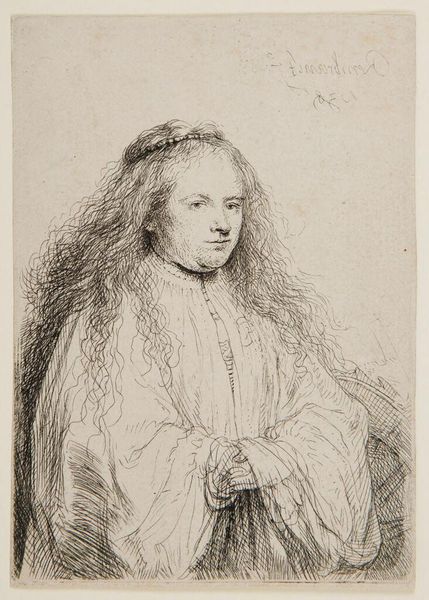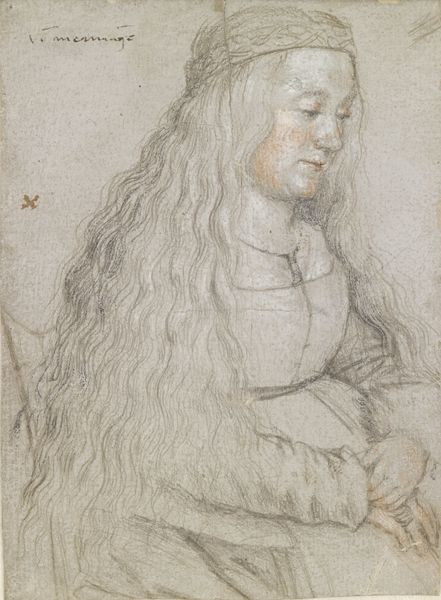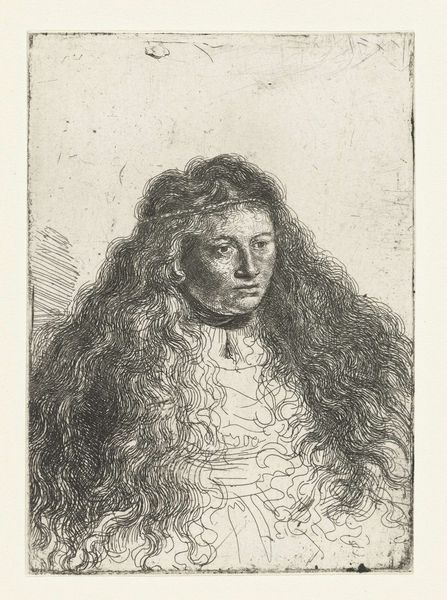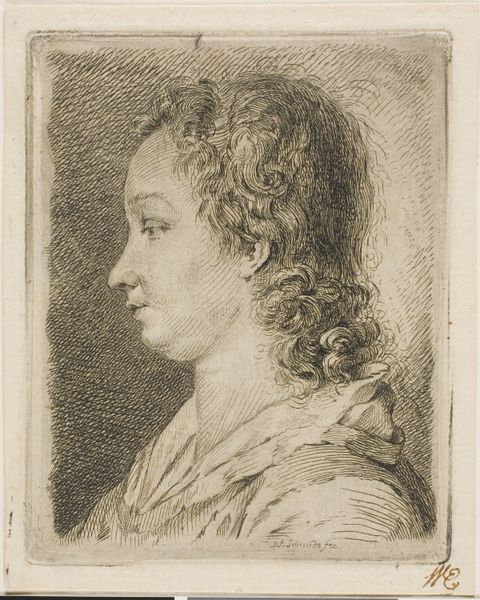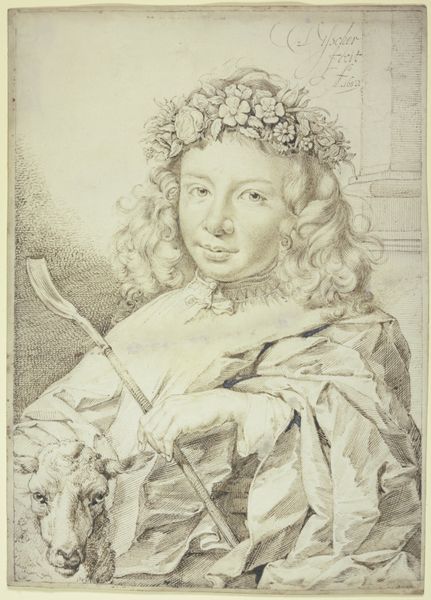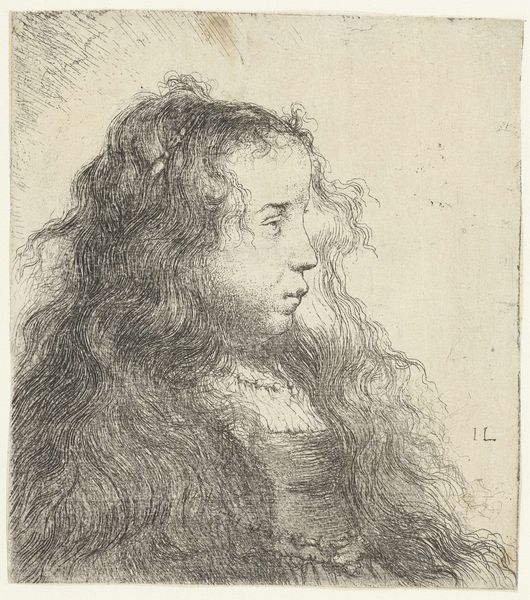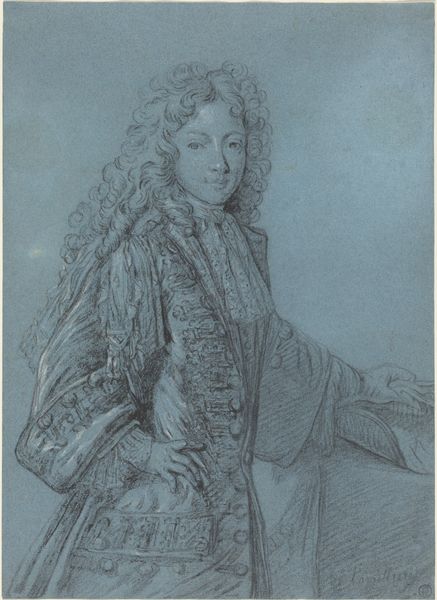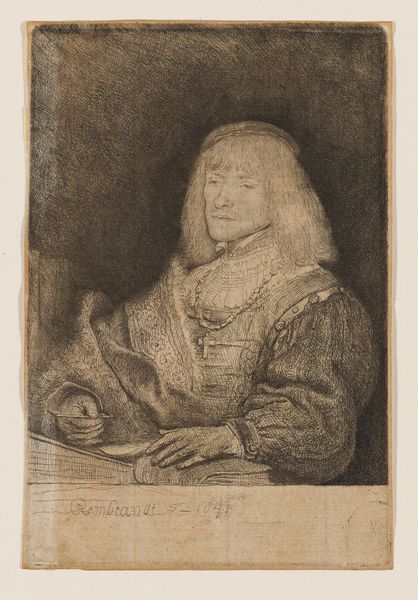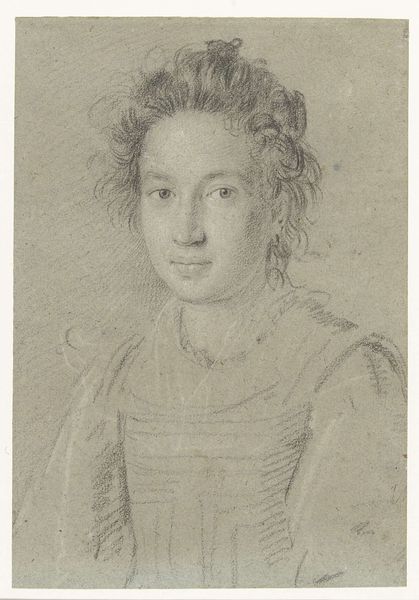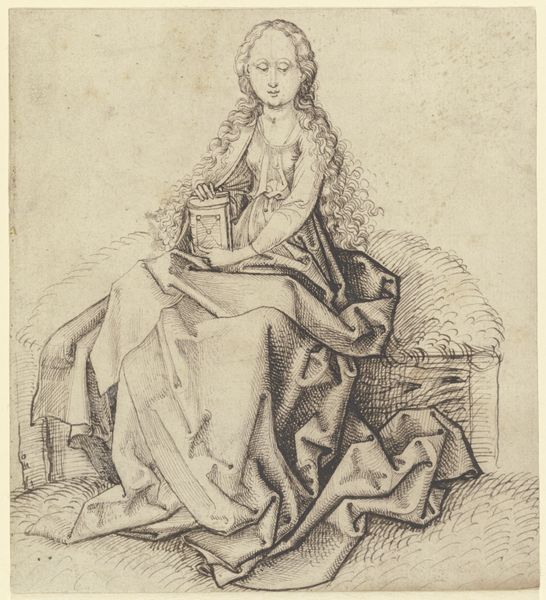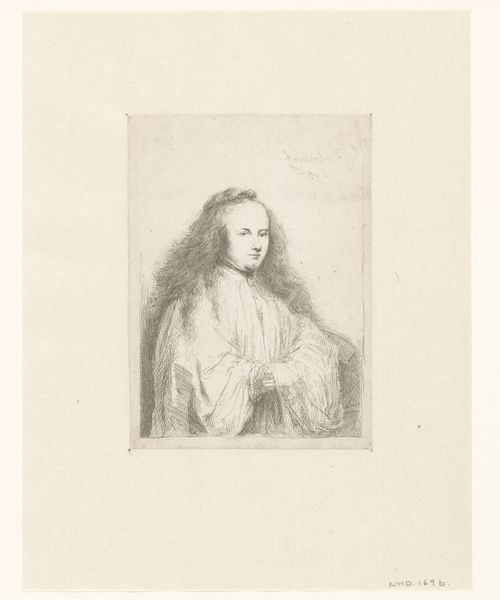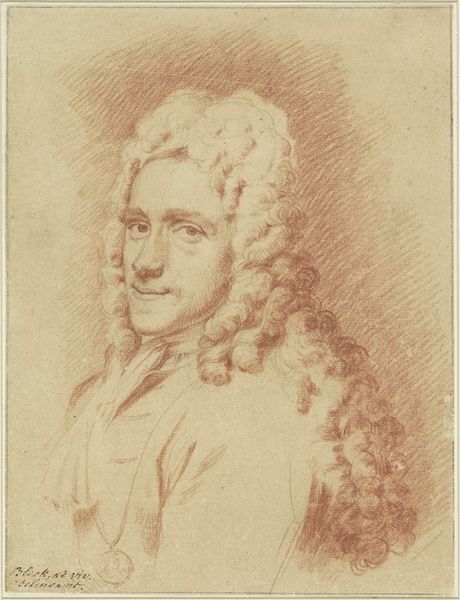
drawing, print, etching, paper, ink
#
portrait
#
drawing
#
baroque
#
dutch-golden-age
# print
#
etching
#
figuration
#
paper
#
ink
Dimensions: 108 × 78 mm (sheet trimmed within platemark)
Copyright: Public Domain
Curator: Before us is "St Catherine," also known as "The Little Jewish Bride," an etching in ink on paper created by Rembrandt van Rijn in 1638. It resides here at the Art Institute of Chicago. Editor: There's a subdued, almost reverent quality to this print. The delicacy of the lines contrasts so strongly with the almost haunting stare of the figure. It feels deeply intimate, yet somewhat reserved. Curator: Notice how Rembrandt masterfully employs the etching technique to build form with these dense clusters of lines, particularly to render the cascades of hair around her face and the folds of her robe. The chiaroscuro effect—the interplay of light and shadow—gives depth and volume. Editor: Her positioning intrigues me. "St Catherine," "Jewish Bride"...these names and identities seem projected onto her. Looking at it from a contemporary, feminist perspective, I question this representation, this naming. Was this portrait intended as a stereotype or simply to exoticize the model? The history embedded in this choice is a little unsettling, especially without knowing who she actually was. Curator: It’s important to consider how titles shifted over time. Rembrandt may not have even given it either of these names himself. Focus instead on his masterful rendering of textures, the tonal range he achieves using just line and ink. See the complexity of the lines, the variety in their weight and direction. It makes her dress believable. Editor: While technique is undoubtedly impressive, focusing solely on the formal aspects ignores the work's potential to ignite a broader discourse. Looking at the way she clasps her hands… there is almost a submissive aspect. How much does it serve to other her? Curator: Perhaps it's also capturing her quiet resolve. In isolation of historical frameworks, one can enjoy that the network of etched lines coalesces to present a moment, frozen in ink and paper, a remarkable achievement regardless of what came later. Editor: And that is precisely what's so gripping about seeing artworks of this caliber: they continue to elicit so many questions, sparking dialogue and urging us to reassess not only history but also the ways we choose to see it today.
Comments
No comments
Be the first to comment and join the conversation on the ultimate creative platform.
